CRESTED OYSTER GOBY - CORAL MAGAZINE
Crested Oyster Goby – A Breeder *Almost* Overlooked
26 Feb, 2013

Crested Oyster Goby – Cryptocentriodes gobiodes – male above, female below – image courtesy Matthew L. Wittenrich / Rising Tide Conservation
We can add another species to our ongoing captive-bred marine aquarium fish list this week with the announcement of successful captive breeding of the Crested Oyster Goby,Cryptocentroides gobiodes. At first glance, it’s safe to say most aquarists are going to credit Rising Tide with claiming another “species first”. However, Rising Tide’s story is much more complicated, since Dr. Matthew L. Wittenrich and the rest of his team at the University of Florida Tropical Aquaculture Laboratory were actually working with “F1″ broodstock. More explicitly, the broodstock used was itself captive-bred.
According to Wittenrich, it turns out that Amy Drehmel, an aquarist based in South Carolina, obtained broodstock in 2010 and by 2011, had quietly succeeded in being the first to rear this attractive goby species, unknown pretty much to everyone outside of a very small circle. Of course, in attempting to double check that fact, we couldn’t find any information published by Drehmel beyond a short note about her obtaining the species. So while Wittenrich et. al. have done a good job of citing Drehmel’s prior work and building upon it, we wonder if Drehmel’s success will be truly recognized by the aquarium hobby at large. More to the point, if the Rising Tide team had omitted this information, it’s fair to say that the world would automatically presume that they were the first to spawn and rear this species, not Drehmel.
‘
In the past few years, I have repeatedly encountered aquarists who have accomplished amazing things, yet no one knows about them. Sometimes, this lack of notoriety and due respect is even annoying to said aquarist, particularly when some other aquarist later succeeds in a similar project and receives the accolades and attention of the community. Of course, I often find that such accomplished aquarists failed to do one thing; they failed to document and share their discoveries and findings with the world!
Some might ask why “credit” matters. It matters when you realize that for most innovative aquarists, “credit”, and the recognition and respect that comes with being the first to accomplish something, is often the only external motivator and reward provided freely by our collective community. Case in point, it is not Amy Drehmel who has leveraged her discoveries into a commercial offering of the species, rather it is FishEye Aquaculture (who announced the commercial availability of the species today).
Certainly, I assume Drehmel was ecstatic about her accomplishment, being the first to breed a species (having done so myself, it was the culmination of a boyhood dream to innovate, and immensely satisfying). Imagine how it would feel if someone else had come along in 2012 and claimed to have been the first to breed the species. Frame this with the added reality that since this hypothetical “second” success would’ve been the first publication of the accomplishment, the collective world would have accepted this other aquarist as the pioneer, not Drehmel.
When it comes to being recognized for innovation, I’d encourage aquarists to be proud of their achievements and not keep them quite. After all, the entire aquarium hobby and industry thrives, and grows exponentially, when information is shared and collaboration is fostered. A story like this potentially points dozens of hobbyist marine breeders in a new breeding direction, searching out other attractive species of Cryptocentroides gobies as breeding project candidates, while a formerly rare species may now become more available (and presumably affordable) as a direct result of this breeding success. None of that would have happened without Drehmel sharing her success with Rising Tide, who then repeated the success and has finally broadcast it to the masses.
Meanwhile, there are stories just like Drehmel’s that to date have failed to make it to the public’s attention (insert personal nudge at new-father and talented fish breeder friend Mike Hoang). Some stories are currently being worked on as future articles for CORAL, but other successes may be destined to remain unknown, or in obscurity, due to a lack of time or interest on the part of an innovator to make the story come to life. Sadly, I can’t write the story for these aquarists; it is their story to tell!
I believe CORAL Magazine plays a critical role in bringing innovation to a greater audience, especially given our roles as curators of information, weeding through the clutter of the internet. In my role as a Sr. Editor, it’s my job to help innovative aquarists like Drehmel, or you, tell the story. I realize that the thought of drafting an article is often intimidating, but I promise to do my best to make you look good! The recognition and seeing your name in print is certainly worth it. That said, we do pay our authors too, so there’s even a financial incentive to telling your story. Perhaps most importantly, by publishing your discoveries, you are helping the next aquarist succeed just as you currently stand on the shoulders of all the aquarist who came before you. Yes, you are giving back to the community.
It’s safe to say that Amy Drehmel’s name will live on in association with the story of the captive-bred Crested Oyster Goby, but it’s also safe to say that it might not have happened that way. “Credit where credit is due” sometimes means making sure you claim the credit that’s rightfully yours!
CORAL loves stories of innovation and chasing the frontiers in the marine aquarium hobby; please don’t hesitate to contact us with your successes. A word of advice for future innovators, start taking tons of high-resolution photos and good notes now; while they don’t seem important at the start of a project, they will be by the end! We’d love to hear about your latest innovation – tell us about it!
Congratulations to Amy Drehmel, Rising Tide, and FishEye Aquaculture for sharing a wonderful story about how a fish went from unknown to the latest commercially-available captive-bred marine fish species. We applaud these ongoing efforts, and keep an eye on a future issue of CORAL for more on this project.

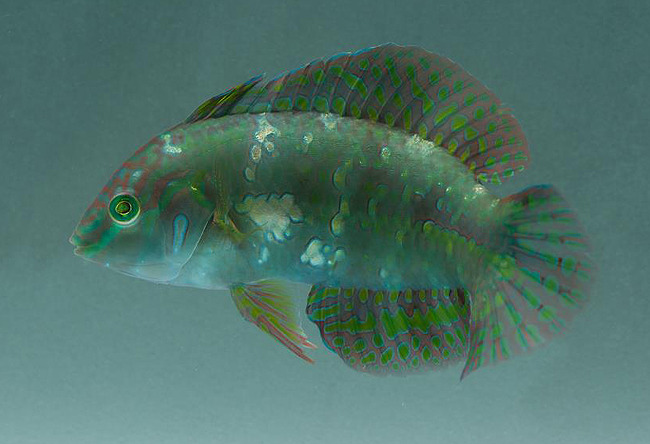
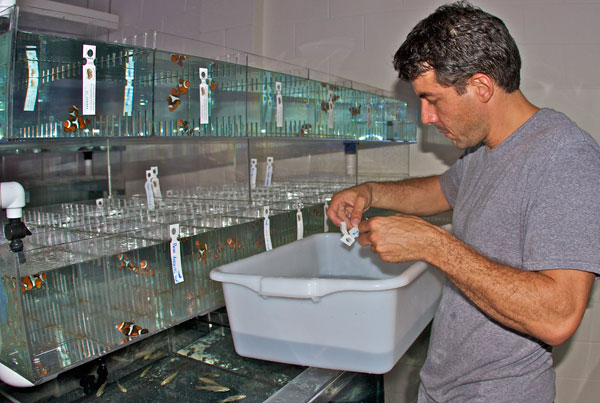 Joe Caparatta, right, told CORAL Magazine during an interview while the animals were being unpacked, “I feel that it’s important for the hobby.”
Joe Caparatta, right, told CORAL Magazine during an interview while the animals were being unpacked, “I feel that it’s important for the hobby.” 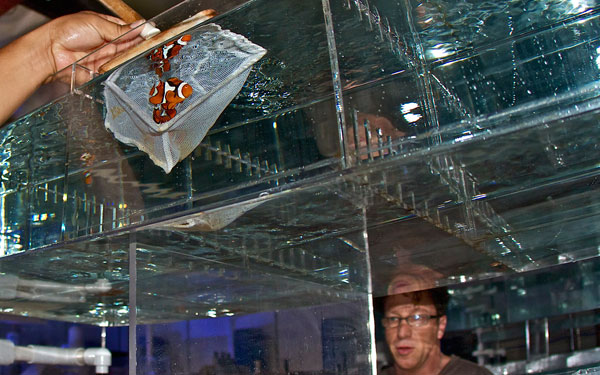
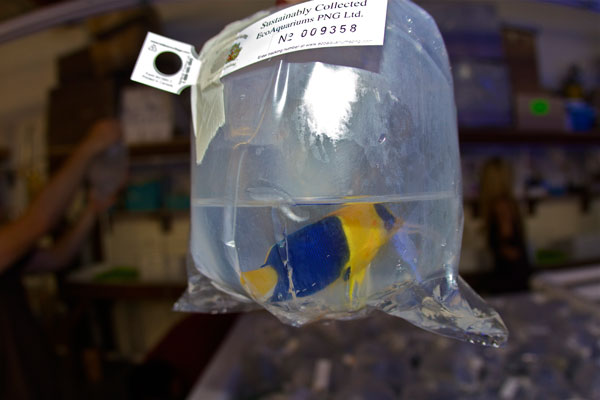 Transparency Lacking in North American Trade
Transparency Lacking in North American Trade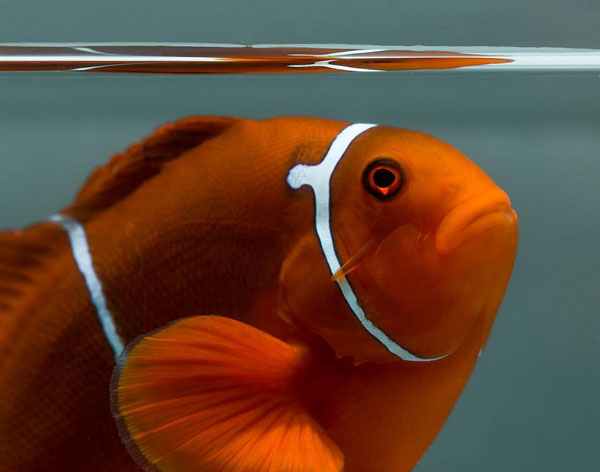
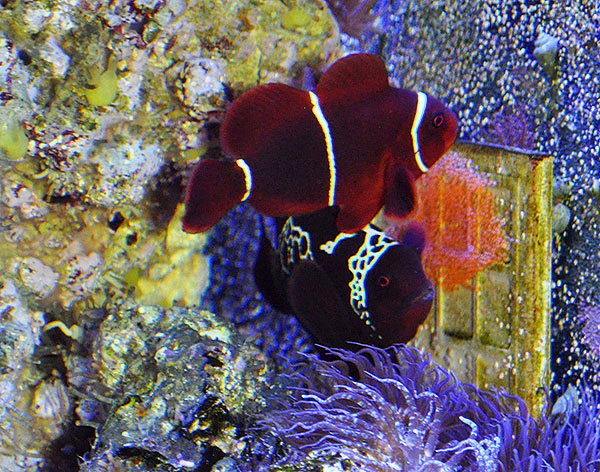
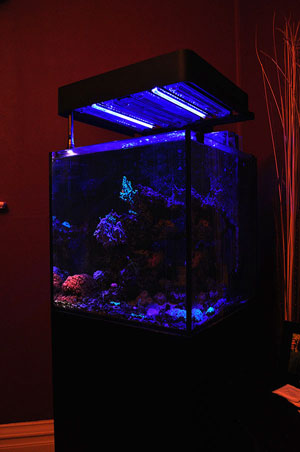
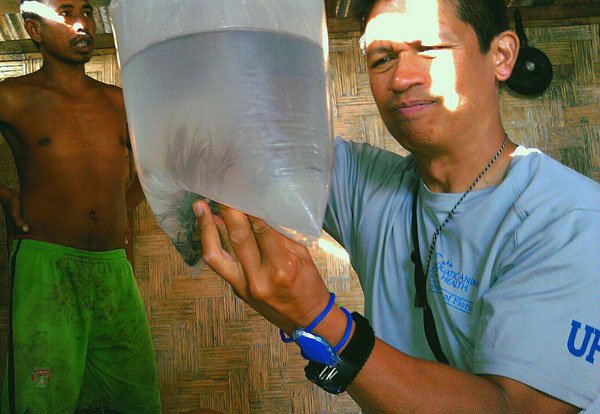
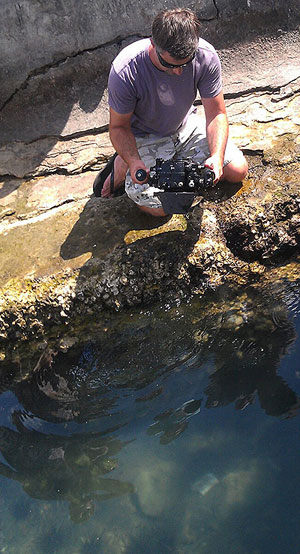
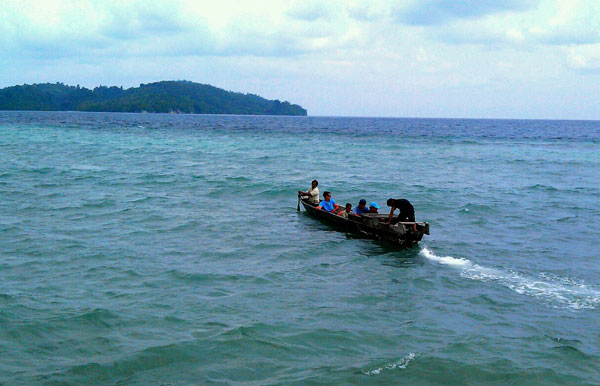
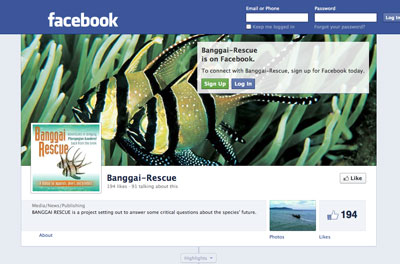
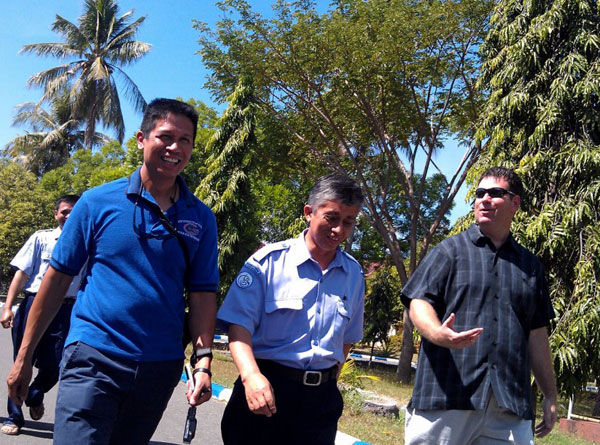
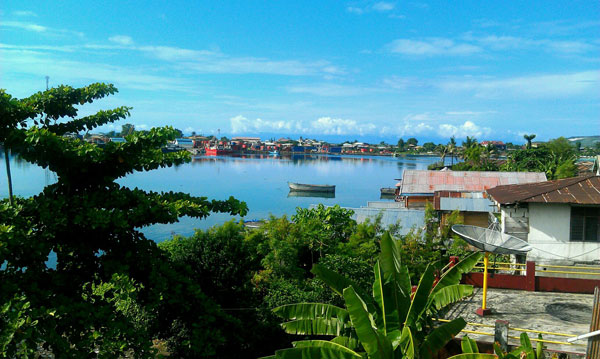
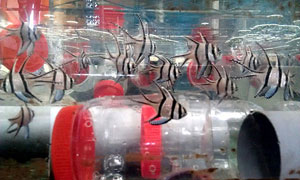

 he new method does not require the sacrifice of living fish, nor long, sophisticated, and expensive laboratory work. The researchers say it will offer affordable and almost immediate method for screening water samples from incoming shipments of fish for the presence of thiocyanate (SCN-) a metabolite excreted by fish exposed to sodium or potassium cyanide. Lead researcher in the development of the method was Dr. Ricardo Calado, right, at the University of Santiago, Aviero, Portugal.
he new method does not require the sacrifice of living fish, nor long, sophisticated, and expensive laboratory work. The researchers say it will offer affordable and almost immediate method for screening water samples from incoming shipments of fish for the presence of thiocyanate (SCN-) a metabolite excreted by fish exposed to sodium or potassium cyanide. Lead researcher in the development of the method was Dr. Ricardo Calado, right, at the University of Santiago, Aviero, Portugal. A common theme expressed by most importers was the fact that, in the absence of any cyanide screening, it is difficult to actually know beyond a question of a doubt that the fishes they purchase are collected without employing destructive fishing practices like cyanide. In addition to using the new test to audit his own supply chains, Palmer is curious about other potential uses for the test. “It would be interesting,” Palmer conjectures, “to test the Solomon or Fiji fish when they first arrive and then again after being mixed in the same system with Indonesia and Philippine fish to see if there is any transfer of a positive test from being mixed with other tainted fish.” The crux for Palmer is price. “Lots of interesting things can be done if this test is indeed cheap enough to more or less test at will,” he says.
A common theme expressed by most importers was the fact that, in the absence of any cyanide screening, it is difficult to actually know beyond a question of a doubt that the fishes they purchase are collected without employing destructive fishing practices like cyanide. In addition to using the new test to audit his own supply chains, Palmer is curious about other potential uses for the test. “It would be interesting,” Palmer conjectures, “to test the Solomon or Fiji fish when they first arrive and then again after being mixed in the same system with Indonesia and Philippine fish to see if there is any transfer of a positive test from being mixed with other tainted fish.” The crux for Palmer is price. “Lots of interesting things can be done if this test is indeed cheap enough to more or less test at will,” he says. “With the new test kit for cyanide detection,” he says, “we can now randomly test incoming fish and let our suppliers know that we will not support unsustainable collection methods.” How would SDC implement such a policy? “I believe once we begin the testing stage,” Cohen suggests, “we will implement a three strikes rule and give our suppliers a chance to reform 100 percent or lose the business.”
“With the new test kit for cyanide detection,” he says, “we can now randomly test incoming fish and let our suppliers know that we will not support unsustainable collection methods.” How would SDC implement such a policy? “I believe once we begin the testing stage,” Cohen suggests, “we will implement a three strikes rule and give our suppliers a chance to reform 100 percent or lose the business.” Every importer interviewed expressed concerns that, given the current state of the trade, it is virtually impossible to know all fishes from all supply chains have been collected legally without cyanide. As several importers pointed out, it is even difficult for all source country exporters to know without question that the fishers from whom they buy fishes have not used cyanide. An easy-to-use, cost-effective testing tool could change that, and it is why such a test is almost universally embraced by most of the major players along the chain of custody for in-house auditing. While most importers readily embrace using the test in-house, whether or not they would as enthusiastically support randomized third party testing is a more complex question.
Every importer interviewed expressed concerns that, given the current state of the trade, it is virtually impossible to know all fishes from all supply chains have been collected legally without cyanide. As several importers pointed out, it is even difficult for all source country exporters to know without question that the fishers from whom they buy fishes have not used cyanide. An easy-to-use, cost-effective testing tool could change that, and it is why such a test is almost universally embraced by most of the major players along the chain of custody for in-house auditing. While most importers readily embrace using the test in-house, whether or not they would as enthusiastically support randomized third party testing is a more complex question. Remembering Bill Addison:
Remembering Bill Addison: 

 leaving large swaths of white skeletons that offer a perfect substrate for algal growth. This chain of events alter reef fish populations and reduce the aesthetic value of coral reefs, which negatively affects both fishing and tourism.
leaving large swaths of white skeletons that offer a perfect substrate for algal growth. This chain of events alter reef fish populations and reduce the aesthetic value of coral reefs, which negatively affects both fishing and tourism.



 Dr. Walsh, left, who helped draft the Bill with Rep. Evans’ office, acknowledges some of the concerns expressed by fishers, but he believes the potential benefits far outweigh the concerns, which he says, in some cases, are unwarranted. W
Dr. Walsh, left, who helped draft the Bill with Rep. Evans’ office, acknowledges some of the concerns expressed by fishers, but he believes the potential benefits far outweigh the concerns, which he says, in some cases, are unwarranted. W
 d a role in drafting HB 2129 tells CORAL she is really proud of HB 2129. Owens is regarded by many as an environmentalist who wants to protect natural resources, but with a better grasp of marine science than other anti-trade activists.
d a role in drafting HB 2129 tells CORAL she is really proud of HB 2129. Owens is regarded by many as an environmentalist who wants to protect natural resources, but with a better grasp of marine science than other anti-trade activists. DLNR Division of Aquatic Resources (DAR) aquatic biologist Dr. William Walsh,right, stated in testimony last October responding to the allegations of devastation, “This is not devastation.” Walsh was speaking specifically to the marine aquarium fishery in West Hawaii, which is by far the largest aquarium fishery in the State. It is also one of the most studied fisheries statewide. Walsh and his colleagues, as well as independent researchers, believe there is no credible scientific data showing a total ban on Hawaii’s marine aquarium fishery is warranted at this time. “We know a lot about what’s happening out there [in the fishery],” says Walsh, who believes whatever is ultimately decided regarding the aquarium fishery will have wider repercussions in other fisheries. “If we can’t successfully manage the aquarium fishery,” Walsh asks, “what hope is there for management of our other fisheries here in Hawaii?”
DLNR Division of Aquatic Resources (DAR) aquatic biologist Dr. William Walsh,right, stated in testimony last October responding to the allegations of devastation, “This is not devastation.” Walsh was speaking specifically to the marine aquarium fishery in West Hawaii, which is by far the largest aquarium fishery in the State. It is also one of the most studied fisheries statewide. Walsh and his colleagues, as well as independent researchers, believe there is no credible scientific data showing a total ban on Hawaii’s marine aquarium fishery is warranted at this time. “We know a lot about what’s happening out there [in the fishery],” says Walsh, who believes whatever is ultimately decided regarding the aquarium fishery will have wider repercussions in other fisheries. “If we can’t successfully manage the aquarium fishery,” Walsh asks, “what hope is there for management of our other fisheries here in Hawaii?” Nonetheless, anti-trade activists are encouraged by what they refer to as “momentum against the trade.” “By now everyone knows that coral reefs are the world’s most endangered ecosystems,” says Rene Umberger of the anti-trade group For the Fishes. “Hawaii is not a third world country needing to exploit resources, regardless of costs, and it’s time to stop acting like one. SCR 1 and various measures proposed to ban or restrict the trade are responses to this fact, as well as a simple cost-benefit analysis showing the true value of Hawaii’s coral reef wildlife.” Umberger, who interprets the data differently and who helped craft the language behind resolutions like SCR 1, believes 2012 “is going to be a very good year for the fishes.”
Nonetheless, anti-trade activists are encouraged by what they refer to as “momentum against the trade.” “By now everyone knows that coral reefs are the world’s most endangered ecosystems,” says Rene Umberger of the anti-trade group For the Fishes. “Hawaii is not a third world country needing to exploit resources, regardless of costs, and it’s time to stop acting like one. SCR 1 and various measures proposed to ban or restrict the trade are responses to this fact, as well as a simple cost-benefit analysis showing the true value of Hawaii’s coral reef wildlife.” Umberger, who interprets the data differently and who helped craft the language behind resolutions like SCR 1, believes 2012 “is going to be a very good year for the fishes.” CR 1 and SR 2 were both introduced by Senate President Shan Tsutsui, right, who is a Maui legislator, and Maui has indeed been the de facto epicenter of the anti-trade movement in Hawaii. In part, this is because Maui is the home of the aforementioned Wintner and Umberger.
CR 1 and SR 2 were both introduced by Senate President Shan Tsutsui, right, who is a Maui legislator, and Maui has indeed been the de facto epicenter of the anti-trade movement in Hawaii. In part, this is because Maui is the home of the aforementioned Wintner and Umberger.
